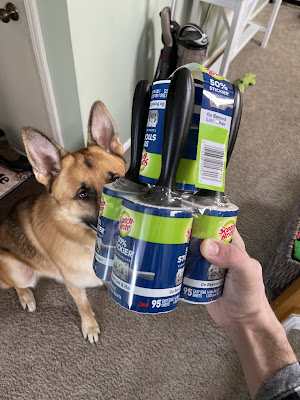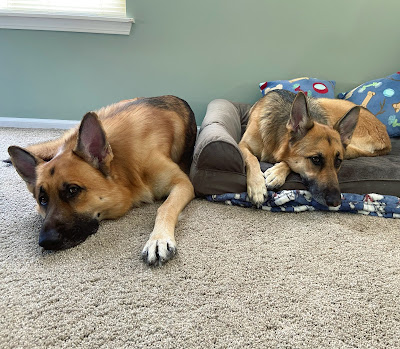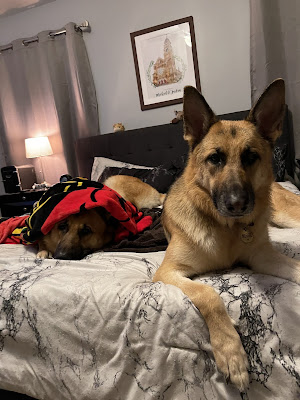Today I went in to complete some of the tests on our “fertility to-do list”. :)
I had yet to visit the actual office Dr. Hobeika works at (since our first appointment was via Zoom), so I was excited to see what the facility was like. It was so lovely! Everything was so bright and clean and welcoming—especially the staff. I was checked in quickly and then whisked off into the back by the nurses before I had even sat down. I started off with the “random” ultrasound. They do this to basically just check out your uterus and make sure everything checks out, as well as to look and see how many follicles you have and if they look okay.
Since most of my fertility-related posts have tended to contain some subjects that the average person wouldn’t know a ton about, I’m going to go all “health class” on you guys again and explain what follicles are/do. ;) A woman’s follicles are located in both of her ovaries. They secrete hormones each month that influence the stages of your cycle. Follicles undergo changes leading up to ovulation (developing many parts and layers), but most follicles will never actually reach ovulation and instead die off before they get released. At the beginning of your cycle, a few developing follicles (usually ten or below) are considered by your body as candidates for that month’s ovulation. As you get closer to your actual week of ovulation, one follicle will become dominant. When that follicle is ready, it releases the egg it has been developing. Your egg will then travel out of whichever ovary it came from to eventually be fertilized by the sperm and start developing into your baby. And, well, you know most of the rest I’m sure!
But, as you can see, your follicles are very important because they start everything off for you! Without follicles you cannot produce any eggs—and obviously, without eggs you can’t make a baby! While there is no exact “normal” number of follicles for a woman to have, generally most women have a total of 10-30 follicles amongst their two ovaries.
I had a transvaginal ultrasound, for those of you who might be sitting there wondering how they were able to see everything in my uterus through the outside of my belly, haha. The ultrasound technician was super friendly and made the whole process go very easily. At one point she got very quiet and stared intently at the screen for a bit, which made me a bit nervous naturally. Eventually she straightened back up and let me look at the screen, which I thought was super cool to see! It turned out she had been counting all of my follicles, and it had taken so long because I had a ton of them! Much more than “average”; 61 to be exact! She told me that having so many was a great thing, because the number of follicles is something women are born with and can’t be easily fixed. If a hormone is too high or low, you can take some medication to fix it. But if you’re born with only three follicles total…well, the doctor can’t just make you magically grow more! So the fact that I had so many was a blessing, because it meant that I was very fertile and even had higher odds for getting pregnant with multiples!
The only potential downfall to having so many follicles is that sometimes they can compete with one another. Because you have so many follicles preparing to release an egg, but only one of them can become dominant, sometimes none of them end up releasing as a result. Kind of a “too much of a good thing” situation.
The appearance of my ovaries and all the follicles could be an indicator that I have either PCO or PCOS. PCO, or Polycystic Ovaries, can only be diagnosed by getting an ultrasound. Typically, women with PCO have no evident symptoms and would not find out they have it until getting an ultrasound—although some women with it might have irregular periods or mild pelvic pain. The findings of either cysts on your ovaries or the presence of many follicles (like I have) are suggestive of PCO.
PCOS, or Polycystic Ovarian Syndrome, is a metabolic condition characterized by abnormal hormone levels. It can be similar to PCO as far as symptoms and ovary appearance, but it differs in that you will also have one or two other traits that someone with PCO would not have. The biggest condition most women with PCOS have is a high level of androgens, or male sex hormones. As a result, many women will have excess facial or body hair. Another condition that very often is seen is a resistance to insulin. Due to this, many women with PCOS are overweight—about 75% of all women with PCOS typically have an issue with weight gain.
Based on the fact that I don’t have excess hair or an issue with my weight, it’s more than likely that I don’t have PCOS. However, the only way to be sure is to check hormone levels for either a high level of androgens or some insulin resistance (since it is possible to have that but not have the mentioned symptoms). As for PCO, we also have to check some other hormone levels to confirm if I actually do have PCO—or just “PCO-appearing” ovaries.
Hence why I then had my baseline labs drawn after the ultrasound! These will be the real indicator if I do or don’t have PCO/S, based on what the levels come back as. Another nurse drew the blood for me in a different room. At first she had me seated at the normal blood draw station, but then when she asked me if I ever get faint from giving blood (and I said yes) she moved me to another room with a recliner. I felt really dumb at first—while I always get nervous and nauseous while giving blood, I’ve never actually fainted and I always stop feeling faint within a few minutes after they finish. But once she started taking the blood, I was immediately very glad I was laid back in the comfy chair. She took a ton of blood! Because of all the hormones they needed to check, plus the standard STD tests and the genetic testing they were going to do, they needed to give more blood than one would usually give. I didn’t watch any of it (or I definitely would’ve passed out lol), but she took about six vials! 😰💉 Towards the end, I guess the blood coming out had “slowed down” so she even had to squeeze my arm a little bit to fill the last one. 😵 Once the needle was out of my arm, she gave me a juice box and had me stay reclined for a few minutes to recover. I was so thankful for her efficiency, and all her help to make the process more comfortable.
After that I was all done with my tests for the day! I was very proud of myself for how good I did with the bloodwork, considering how squeamish I usually get and how much blood they ended up taking! Once all these results come back we’ll see if I will be getting my period naturally (doubtful 😅) or if they have to induce one so I can then get my cycle-specific ultrasound and blood work done—to then be followed by the saline sonogram.










































